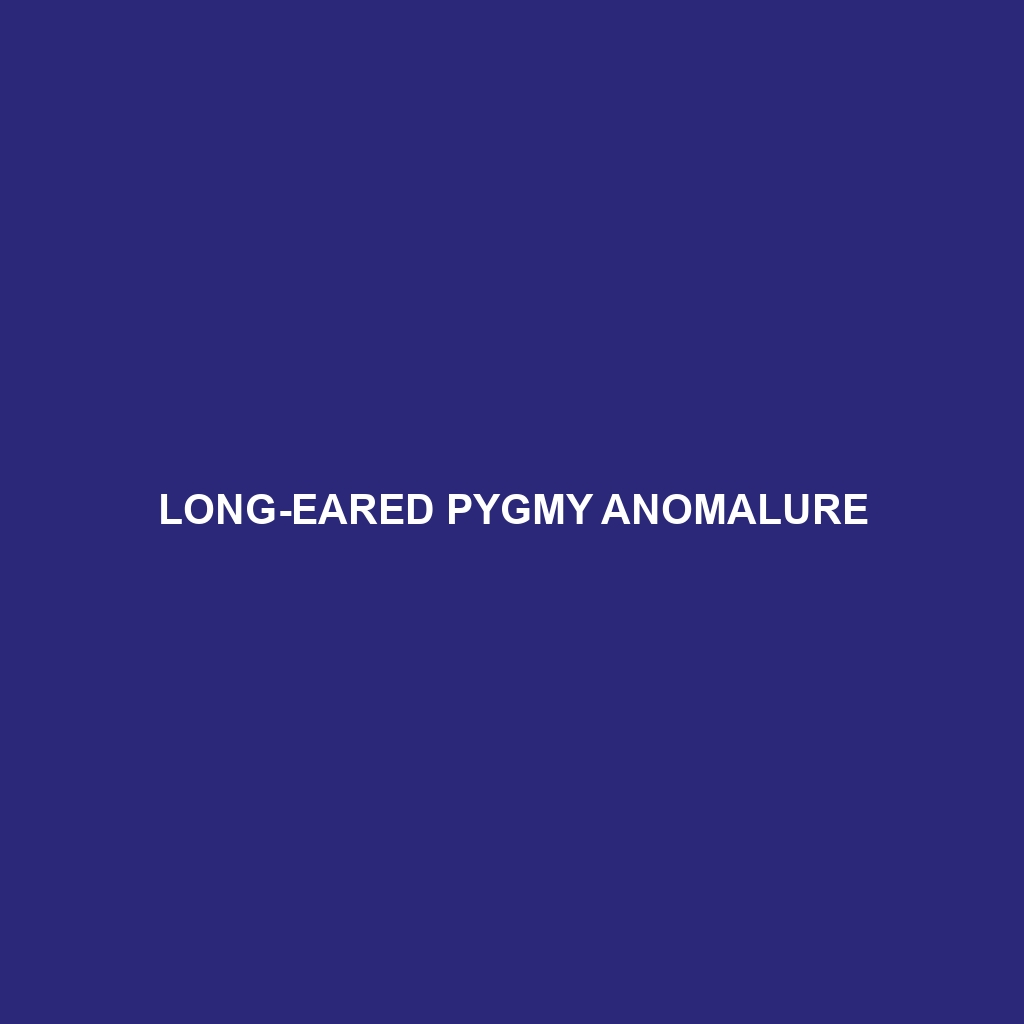Zenker’s Pygmy Anomalure: A Detailed Overview
Common Name: Zenker’s Pygmy Anomalure
Scientific Name: Zenkerella insignis
Habitat
Zenker’s Pygmy Anomalure is primarily found in the lowland tropical forests of central Africa, particularly in Cameroon and the Republic of Congo. These small mammals prefer humid and dense forest environments, where they inhabit tree canopies and rely on their arboreal adaptations for survival. The species is typically associated with primary and secondary forests, further establishing its preference for undisturbed habitats rich in biodiversity.
Physical Characteristics
Measuring about 20-25 cm in length, Zenker’s Pygmy Anomalure is characterized by its small, compact body and a long, bushy tail that can be equal to or longer than its body. The fur is soft and dense, varying in color from light brown to reddish-brown on the back, while the underside is lighter. Notable features include large eyes adapted for nocturnal vision and distinctive membrane flaps that extend from their forelimbs to hind limbs, aiding in gliding through the forest.
Behavior
Typically nocturnal, Zenker’s Pygmy Anomalure exhibits active behaviors at night, using its keen sense of sight to navigate through trees. They are solitary foragers, often gliding from branch to branch in search of food. Their unique gliding ability not only helps in escaping predators but also in traveling between trees to find suitable feeding grounds.
Diet
This species is primarily herbivorous, with a diet that includes fruits, leaves, and nuts. They play a critical role in seed dispersal within their ecosystem, contributing to forest regeneration. Occasionally, Zenker’s Pygmy Anomalure may consume insects and other small invertebrates, demonstrating a flexible feeding habit that allows adaptation to food availability.
Reproduction
Reproduction in Zenker’s Pygmy Anomalure occurs at specific times of the year, typically during the rainy season when food resources are abundant. Females usually give birth to a litter of 1-3 offspring after a gestation period of approximately 50 days. The young are born altricial and rely heavily on their mother for nutrition and protection during their early life stages.
Conservation Status
The Zenker’s Pygmy Anomalure is currently listed as vulnerable by the International Union for Conservation of Nature (IUCN). Habitat loss due to deforestation and agricultural expansion poses significant threats to its population, making conservation efforts essential for its survival.
Interesting Facts
Zenker’s Pygmy Anomalure is one of the smallest flying mammals, showcasing impressive gliding capabilities that can reach distances of up to 50 meters. Their unique anatomical structures not only facilitate gliding but also serve as a fascinating example of evolutionary adaptation to forest life.
Role in Ecosystem
As a seed disperser, Zenker’s Pygmy Anomalure plays a crucial role in maintaining forest biodiversity. By consuming fruits and dispersing seeds, they contribute to the regeneration and health of their forest habitat. Their presence indicates a healthy ecosystem, and their interactions with various other species highlight the interconnectedness of the rainforest environment.
